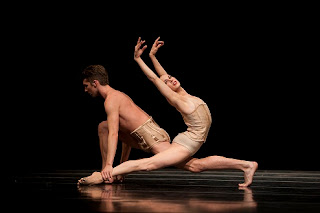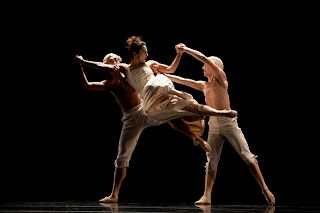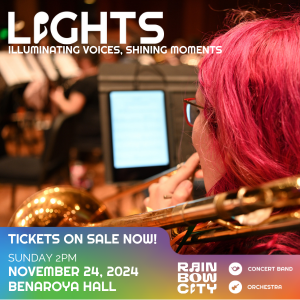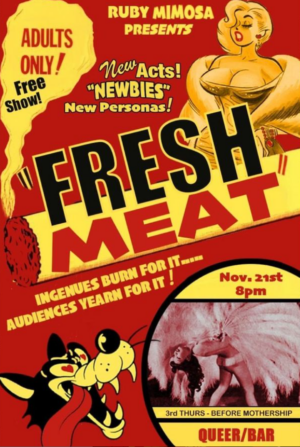Last Christmas, I wrote and performed for a drunken holiday audience at the Rendezvous, a poem titled “I Once Was In ‘The Nutcracker’ Before I Was Fat”, which in 8 lines featured intentionally ill-placed on-and-off-again rhymes…it openly outed me as a nut for all things considered choreographed dance. This does not necessarily reflect on my general outlook regarding dance, which is that any physical expression with intention and purpose, regardless of rhythm or lack thereof, can be referred to as such (dance, that is). I’ve always been an advocate to my friends that “there is no such thing as ‘I can’t dance'”, a theory that was only further solidified as truth when I witnessed a Chicago ballet company feature entire pieces performed by individuals in wheelchairs. Seattle is blessed with expert dance companies, by the way… from Velocity Dance Center, to the Spectrum Dance Company, heading over to the Cornish Dance Program, and even small troupes such as local Butoh performance work, Burlesque, and the countless Belly Dancing, Flamenco, and Salsa groups who make themselves readily available for small or large performances. The top of the tier, is that of the Pacific Northwest Ballet and their 2010/2011 opening selection by Artistic Director, Peter Boal, simply titled “Director’s Choice”. It is a treat, offering a polished, diverse, visually electrifying night of artistic dance entertainment.
What is wonderful about the PNB’s “Director’s Choice” show (and this is the second I’ve attended in the last 4 years), is you have such a collective mix of dance forms, from polished ballet, to graceful modern dance, and even a thrash of folk, and stylized, rhythmic movement pieces. The evening gives us a taste of four different showcases, two of which are new to the Pacific Northwest Ballet Company.
First up, with music by Wolfgang Amadeus Mozart, choreography by Jiri Kylian, and staging by Roslyn Anderson, is the second mounting of Petite Mort . The piece opens on a nearly bare stage with the exception of six men carrying swords. In silence, they give us a masculine presentation that exudes both grace and the most dedicated concentration. Once the male dancers are joined by an equally impressive group of women, the progression in the intensity and energy is apparent, and we are then introduced to couples, each moving with a dedicated attention to detail: not a single moment between the duos is lost, regardless of the swift transitions from standing alone to climbing practically all over, sometimes dangling, feet clapping — nearly one on top of the other. It paints a supremely erotic picture, bodies entwining, carefully calculated, and always fascinating.
Following a musical interlude, we are given the evening’s most outwardly absurd and hilarious act: “Sechs Tänze” (Six Dances), featuring the same composer, choreographer, and staging. A slightly larger ensemble takes us to the 18th century, complete with powdered wigs, and overtly large period dresses which are on wheels, and often surprising us by leaving a bit too early unbeknownst to a male dancer only wearing a Adam-like leaf to cover himself up. The games played between the genders, which goes back and forth between severe rage, extreme sexuality, and lots of naughty business in between (some homoerotic, some in trios) is clever, zany, and easily won the audience over within the first few minutes.
The second act presented the evening’s most melancholy and moving dance: Jardí Tancat, with songs based on Catalonian folk tales, composed and sung by Maria del Mar Bonet. Choreography is by Nacho Duato, and staging by Nathalie Buisson. The setting of the story is apparent, with dried up wooden poles of various heights creating a half circle around the stage, and eloquent, earthy coloured costumes by Mr. Duato himself. Six dancers (Ariana Lallone, Rachel Foster, Carrie Imler, Jeffrey Stanton, Batkhurel Bold, and Oliver Wevers) fill the space with fluid, powerful movement, showing us a desert like climate’s inhabitants, as they struggle to carry through with their frustrations living on such a barren land. They pray for water, they plead for one another to show affection, and manage to pull themselves through, in a delicate series of duets that end on a very moving, staggeringly breathtaking note. (The music, sung by Ms Bonet is masterfully chosen, and is apparently very difficult to obtain on CD.) This dance is simply a masterpiece, and with good hope, it will not be the only time PNB offers this in their repertoire.
The evening’s final dish is that of “Glass Pieces”, combining two well known artists together for a very interesting event. With Philip Glass’s minimalist music, and Jerome Robbins’s expressive choreography (re-staged here by Jean-Pierre Frohlich), “Glass Pieces” mixes the entire PNB company together, with a frantic pace as dancers do everything but collide while walking from one side of the stage to the next, heal to toe, with the occasional duet appearing with leaps through the air, to signify their presence in the midst of the crowd. Three individual dances are seen, the first, “Rubric”, and third an excerpt from the opera “Akhnaten”, are motion-filled forces, with intensity that left me with the most avid trust for the remainder of PNB’s season. The second, “Facades”, sports a classic, expert duet by Carla Korbes and Batkhurel Bold, and features a precise, moody ambiance by a seemingly never-ending line of silhouettes which move slowly across the back of the stage, as not to distract, but to bring tone and volume to the glorious presentation on part of the seasoned soloists in the spotlight.
As separate movements, “Director’s Choice” gives a different array of emotions for this dance-hungry Queen, and I cannot stress further my anticipation for the other promising ventures this season. As a collective whole, Peter Boal should be commended for giving Seattle audiences, once again, a reason to come to the Ballet, to continue supporting this classic form of art, and keep local communities cultured and dazzled by a never ending, innovating, glorious art that is dance. Dare I say it? Not to be missed.
For more information and background on “Director’s Choice”, ticket purchases, and the 2010/2011 season line-up, visit http://www.pnb.org/!
-Aiden Karamanyan




















